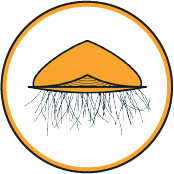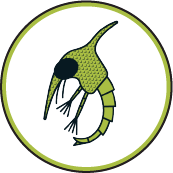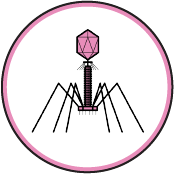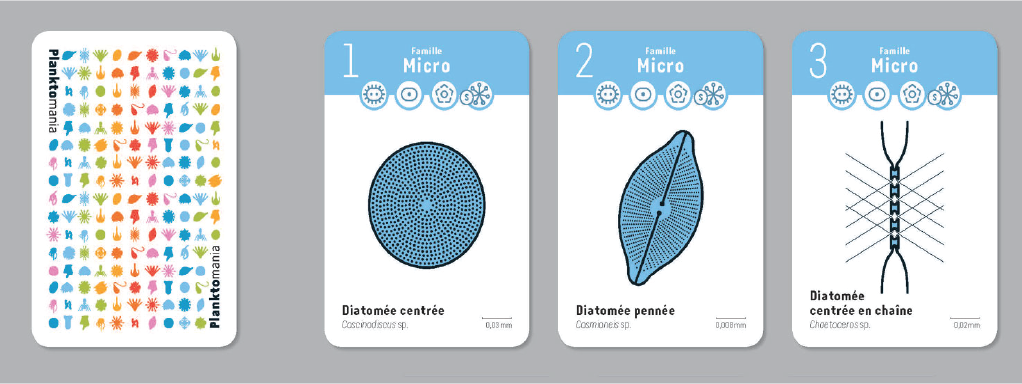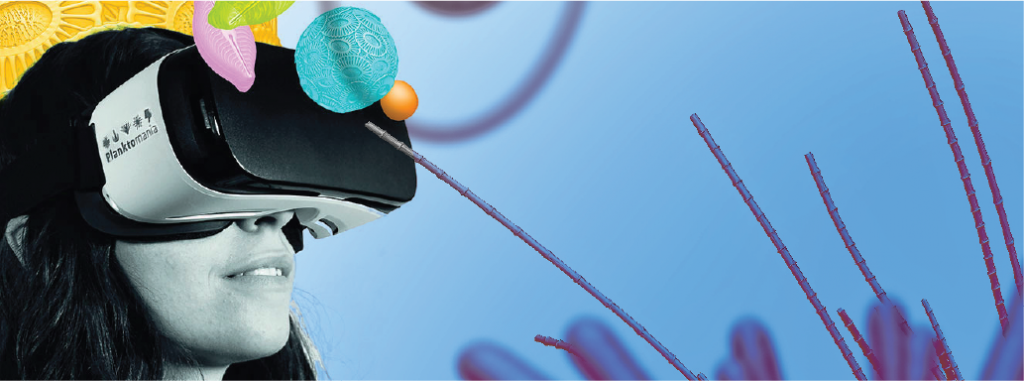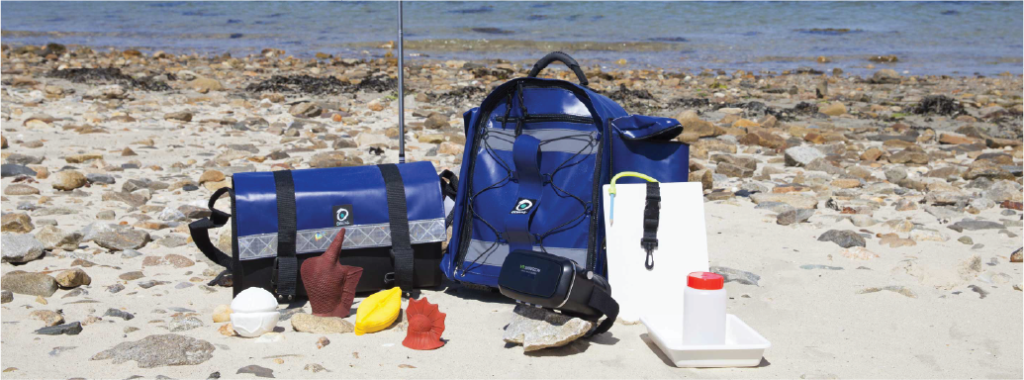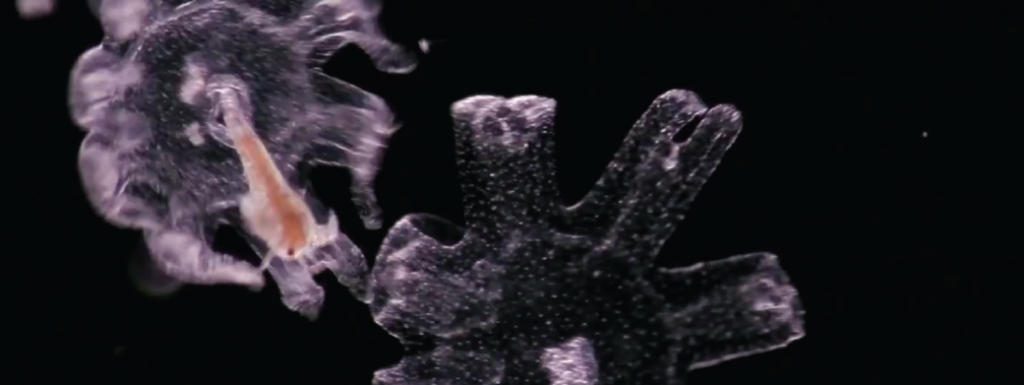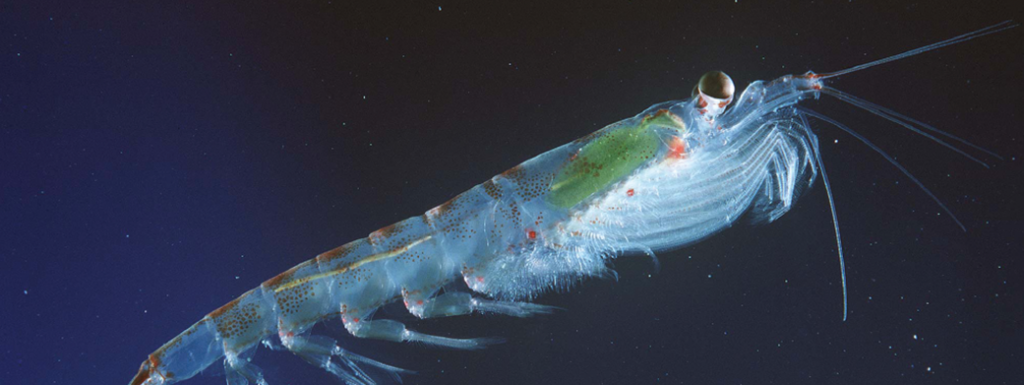Plankton
Discover what lies beneath the surface!
Essentially composed of organisms that are invisible to the naked eye, marine plankton plays a fundamental role in the ecology and climate of our planet. It is the basis of the marine food web and harbours exceptional biodiversity. Phytoplankton produces half of the oxygen that we breathe!

Micro Family - from 0,02 to 0,2 mm
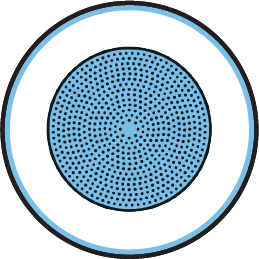
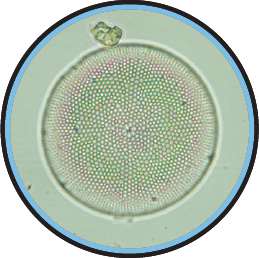
Coscinodiscus sp.
Diatoms dominate cold and temperate waters where they can constitute more than 80 % of the plant plankton (phytoplankton). More than 6000 species are known to date.
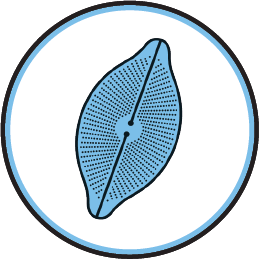
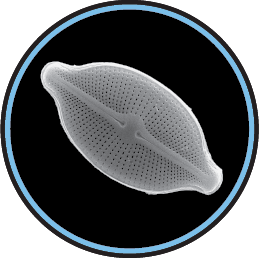
Cosmioneis sp.
In the Auvergne and Ardèche regions, a siliceous rock called diatomite can be found. This rock is formed by the accumulation of diatoms at the bottom of ancient volcanic lakes.
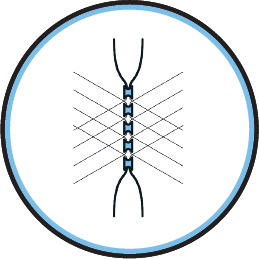
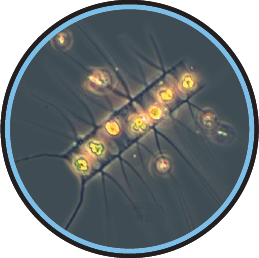
Chaetoceros sp.
Chaetoceros is a group comprising several dozen species of diatom that are present in all oceans. They are mostly marine except 2 freshwater species.

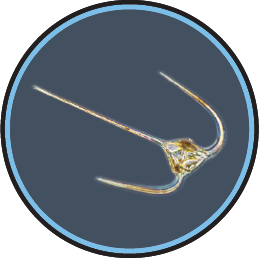
Ceratium sp.
Ceratium belongs to the large group called dinoflagellates. It has 2 flagella that allow it to swim and rotate.

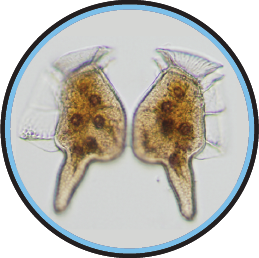
Dinophysis caudata
Dinophysis can multiply when conditions are favourable and provoke blooms containing toxic substances that can make shellfish bad to eat.
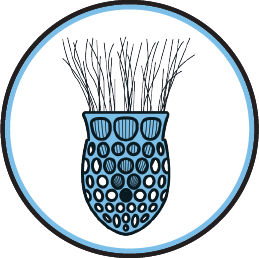
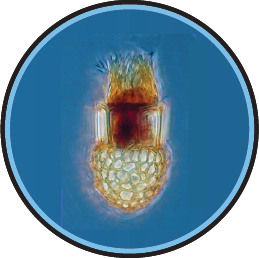
Dictyocysta sp.
Ciliates are small unicellular zooplanktonic organisms. They are very diverse and abundant in both seawater and freshwater. Some of them, like tintinids, produce a casing called a lorica.

Phytoplancton

Mixotrophe

Zooplancton

Unicellulaire

Pluricellulaire

Enveloppe externe

Pas d'enveloppe externe

Alvéolés

Straménopiles

Haptophytes

Rhizaires

Métazoaire

Archaeplastida

Autres
Les photographies illustrant les organismes sont la propriété de leurs auteurs respectifs. La liste des crédits est disponible ici.
Macro Family - more than 20 mm
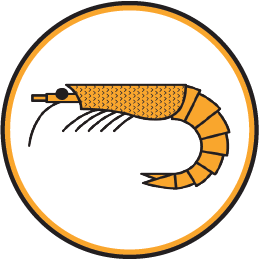
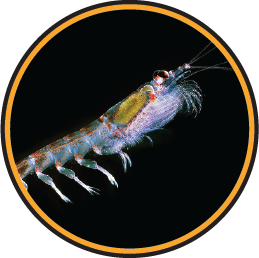
Euphausia sp.
The Krill, small crustaceans, are key for feeding of baleen whales (without teeth). A blue whale can eat 5 tonnes of krill each day !The Krill, small crustaceans, are key for feeding of baleen whales (without teeth). A blue whale can eat 5 tonnes of krill each day !
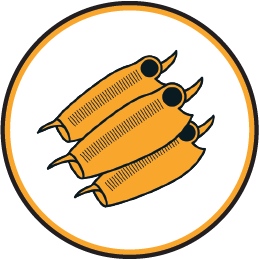
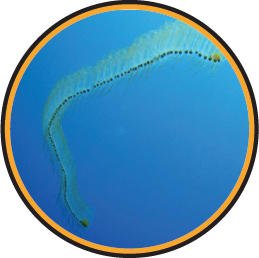
Salpa sp.
Salps are organisms that form long chains of individuals « hand in hand » in the water. They are even capable of communicating between themselves by electrical signals.
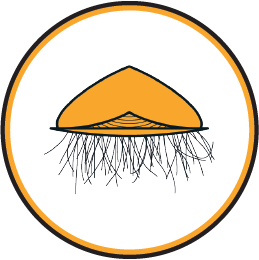

Velella velella
Velella comes from the latin « velum » which means « sail », referring to the cartilaginous membrane on its floating disc. It moves at the surface of the water by the action of the wind on its sail.

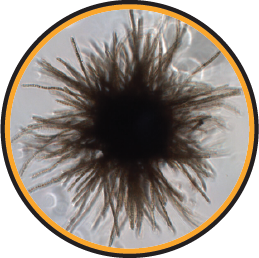
Trichodesmium sp.
Trichodesmium comes from the greek « trikhos » which means « hair » and « desmion » which means « bundle ». Trichodesmium means « bundle of hairs ». Trichodesmium can be abundant under certain conditions, forming blooms that are visible with the naked eye.
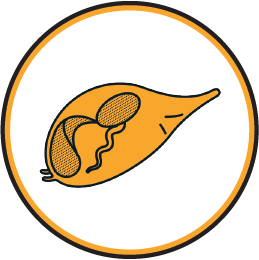
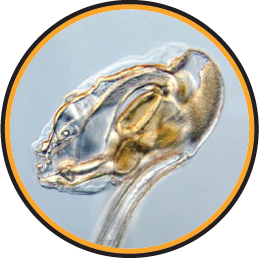
Oikopleura dioica
Oikopleura dioica looks like a tadpole. Its tail is equivalent to the ancestor of our vertebral column. Oikopleura lives in a cubicle that it builds around itself and renews regularly.
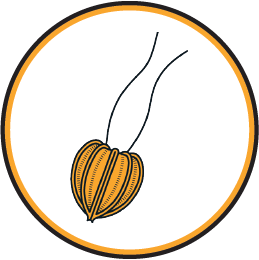
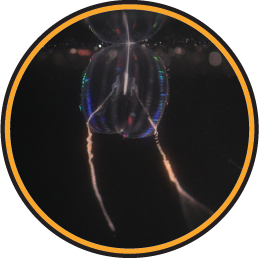
Pleurobrachia sp.
Pleurobrachia has rows of locomotory cilia that are irridescent (they appear to change colour according to the angle of view). These organisms are also commonly called sea gooseberries.

Phytoplancton

Mixotrophe

Zooplancton

Unicellulaire

Pluricellulaire

Enveloppe externe

Pas d'enveloppe externe

Alvéolés

Straménopiles

Haptophytes

Rhizaires

Métazoaire

Archaeplastida

Autres
Les photographies illustrant les organismes sont la propriété de leurs auteurs respectifs. La liste des crédits est disponible ici.
Meso Family - from 0,2 to 20 mm
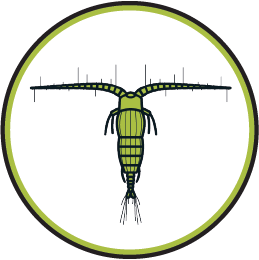
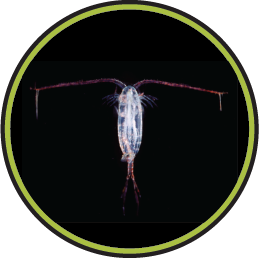
Copepoda
The term « copepod » has 2 greek roots : kope meaning oar and podos meaning foot. The name of these animals refers to their oar-like legs.

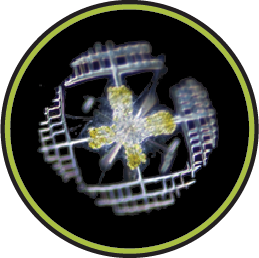
Lithoptera sp.
Lithoptera (which means « stone wing ») has a strontium sulphate skeleton resembling a star or a satellite. The cell hosts many yellow algal cells living in symbiosis.

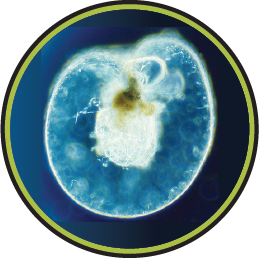
Noctiluca scintillans
Many marine organisms, like Noctiluca scintillans, can produce light for camouflage, communication, or to attract or repulse other organisms. This light is most often produced by the action of an enzyme called Luciferase.
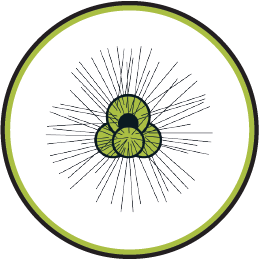
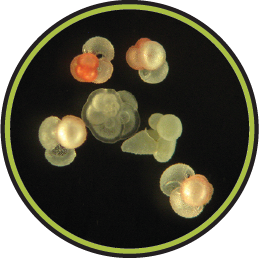
Globigerina sp.
The mineral skeletons of foraminiferans like Globigerina (in calcite) can be preserved in sediments for millions of years. These fossils are often used by geologists to date ancient rocks.
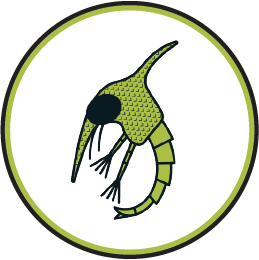
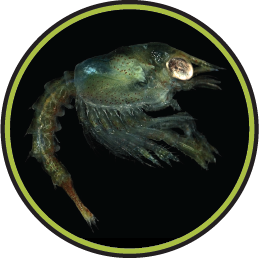
Larve Zoe – Crabe
The Zoe larva is a temporary plankton species. It is part of the plankton only during it’s larval life. It gets bigger by eating other plankton and ends up transforming into a crab !

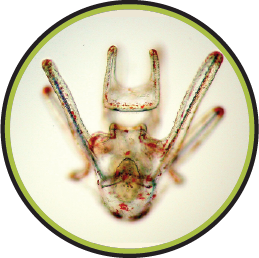
Larve Pluteus – Oursin
The Pluteus larva is a member of the echinoderm family. Echinoderm means « spiny skin ». Sea urchins and starfish are the best known echinoderms.

Phytoplancton

Mixotrophe

Zooplancton

Unicellulaire

Pluricellulaire

Enveloppe externe

Pas d'enveloppe externe

Alvéolés

Straménopiles

Haptophytes

Rhizaires

Métazoaire

Archaeplastida

Autres
Les photographies illustrant les organismes sont la propriété de leurs auteurs respectifs. La liste des crédits est disponible ici.
Nano Family - from 0,002 to 0,02 mm

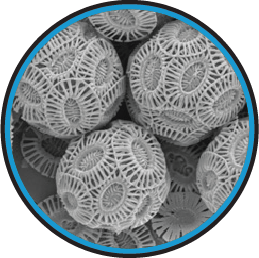
Emiliania huxleyi
Coccolithophores like Emiliania can be very abundant in the oceans. When they die, they sink to the deep oceans. Over geological time they form a well known type of rock : chalk !
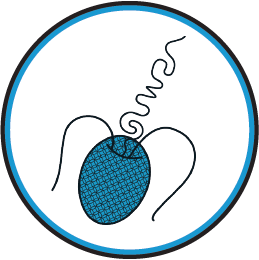
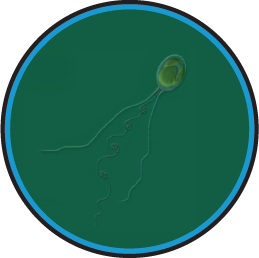
Chrysochromulina sp.
Chrysochromulina is mixotrophic which means that it is capable of photosynthesis and also predation thanks to an appendix characteristic of the group called a haptonema.
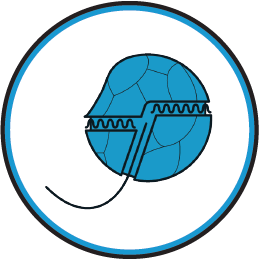

Alexandrium sp.
Alexandrium is a microalga that produces toxins that can paralyze humans. This species can reproduce very quickly to attain concentrations of several million cells per litre, colouring the water into what are known as red tides.
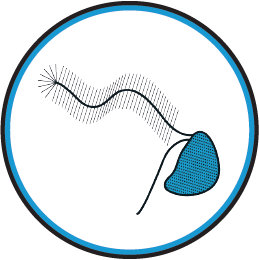
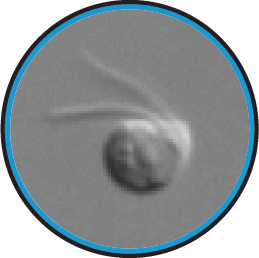
Cafeteria roenbergensis
The name Cafeteria roenbergensis was given to this organism because it has a ferocious appetite which provoke many discussions between the scientists that discovered it in the cafeteria of the Rønbjerg laboratory in Danemark.

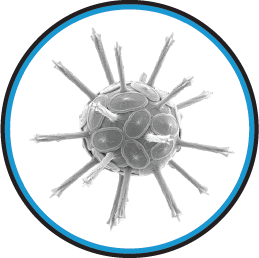
Rhabdosphaera sp.
Rhabdosphaera sp. is a species of coccolithophore possessing ornamented calcite plates.

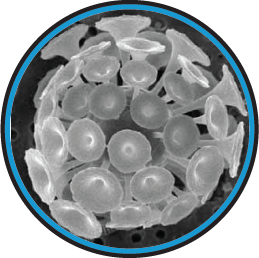
Discosphaera sp.
Discosphaera and Rhabdosphaera are closely related species that had the same name for a long time. Scientific advances allow more and more different species to be distinguished, notably via comparison of their genetic composition.

Phytoplancton

Mixotrophe

Zooplancton

Unicellulaire

Pluricellulaire

Enveloppe externe

Pas d'enveloppe externe

Alvéolés

Straménopiles

Haptophytes

Rhizaires

Métazoaire

Archaeplastida

Autres
Les photographies illustrant les organismes sont la propriété de leurs auteurs respectifs. La liste des crédits est disponible ici.
Pico Family - from 0,0002 to 0,002 mm

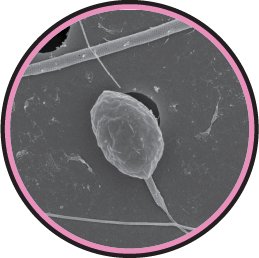
Micromonas sp.
1960 : Description of Micromonas pusilla, one of the most abundant microalgae in temperate coastal waters. Up to 30 000 Micromonas cells can be found in each millilitre of seawater.
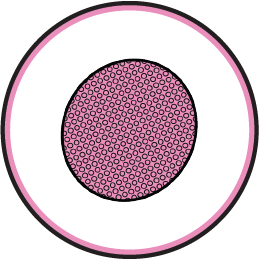
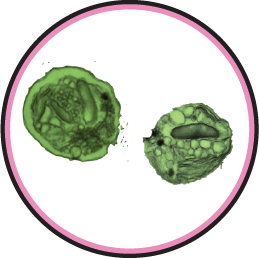
Ostreococcus sp.
Ostreococcus is a unicellular algal species first observed in the Thau lagoon in the south of France and described in 1995. It is the smallest eukaryotic cell known, measuring only 0.8 µm.

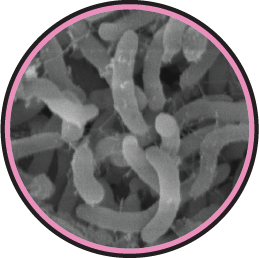
Pelagibacter sp.
Pelagibacter is one of the smallest and most abundant organisms in surface oceans : it is a member of the bacterial lineage. Bacteria are unicellular organisms the DNA of which is not confined within a nucleus. These organisms are also called prokaryotes.
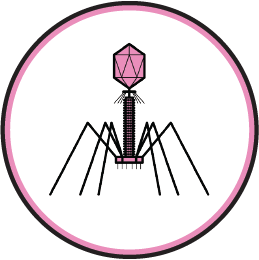
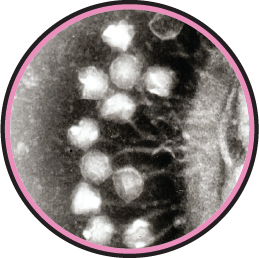
Phage
A phage is a virus that only infects bacteria, like Pelagibacter or Prochlorococcus for example. On average there are 10 million viruses in each millilitre of seawater.
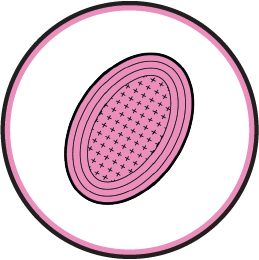
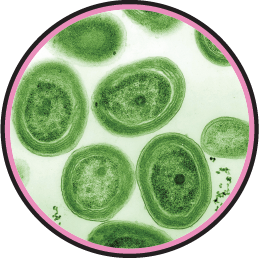
Prochlorococcus sp.
Cyanobacteria were at the origin of oxygen on Earth, appearing 3.7 billion years ago. Prochlorococcus is a bacteria that undertakes photosynthesis.

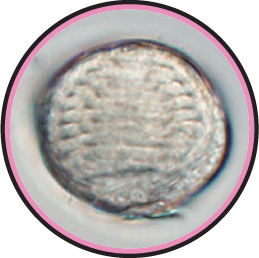
Amoebophrya
Amoebophrya is a plankton that parasitizes other plankton!
It is capable of infecting microalgae, even though some are toxic, and kills them in order to grow and reproduce.

Phytoplancton

Mixotrophe

Zooplancton

Unicellulaire

Pluricellulaire

Enveloppe externe

Pas d'enveloppe externe

Alvéolés

Straménopiles

Haptophytes

Rhizaires

Métazoaire

Archaeplastida

Autres
Les photographies illustrant les organismes sont la propriété de leurs auteurs respectifs. La liste des crédits est disponible ici.
Plankton TV
Find out all about plankton and its ecological roles with our fun videos !
Immersive 2D video
Immersive 3D video
Plankton bloom
DNA signature
Planktomania : Dive in!
Cell
Oxygen production
Food chain
Marine bioresources
Marine snow
Plankton diversity
Mobile Applications
Your turn to play !
Find out more about plankton straight from the couch, or during your next stroll through the city! Check out our mobile applications – absolutely free! – to have fun and learn more about plankton using virtual and augmented reality!
Planktomania AR
Partner applications
Want to learn while you’re out and about?
The Street Science application proposes scientific games in augmented reality to allow you to discover all of the secrets of plankton while being a tourist ! Will you find all of the pictograms hidden in the town?
To find out more, visit the Street Science site or download the app !
Resources
There’s something for everyone! From families to teachers or educators, discover and download – for free! – the educational materials created by Planktomania: Planktobox, immersive videos, 3D models, and even games!

Planktobox
Using 3D as well as augmented and virtual reality, this learning kit was developed in order to help everyone discover and learn more about plankton. It was designed for animators of educational and environmental associations, marine educators and teachers.
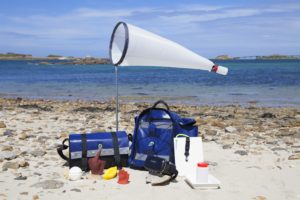
3D Models and games
Download all the educational resources developed by Planktomania (for free!) : 3D models for printing, documents, videos, illustrations, …
Planktomania resources are freely accessible under the Creative Commons CC-BY-NC-SA licence : Attribution, No Commercial Utilisation, Sharing in the Same Conditions.
The Project
Project partners :

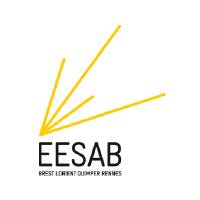
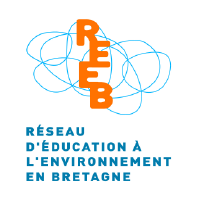
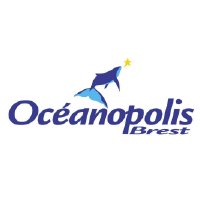





Context
Make visible the invisible!
Essentially composed of organisms that are invisible to the naked eye, marine plankton plays a fundamental role in the ecology and climate of our planet. It is the basis of the marine food web and harbours exceptional biodiversity. Phytoplankton produces half of the oxygen that we breathe!
Despite this primordial role, plankton are not often addressed by teachers and animators because of the difficulty of seeing microscopic organisms. They tend to bypass this essential component of marine ecosystems because they don’t have access to the appropriate tools (notably microscopes).
Objectives
This innovative educational project aims to create tools for the discovery of the infinitely small via new technologies (augmented and virtual reality, 3D objects).
The main innovation is to avoid the constraints associated with the use of a microscope, which are often costly, bulky (a problem for portable animations), and difficult to use for the general public, youngsters, and sometimes the teachers themselves.
Planktomania tools target the general public, animators of educational and environmental associations interested by the development of scientific culture, and primary and secondary school teachers.
Currently there is no microscope that is suitable for observing all of the organisms in the plankton, from viruses to animal larvae… so dive into the planktonic universe thanks to 3D !

